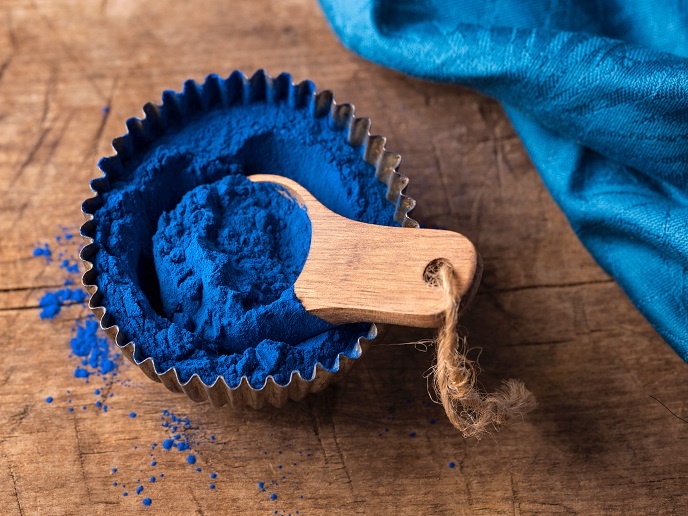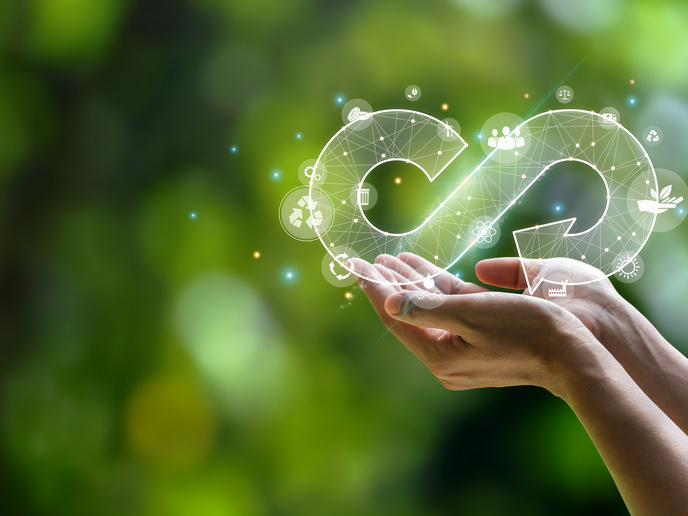Sewage-cleaning microalgae offer a green way to make blue
The EU contains around 3.2 million km of sewer pipes – enough to stretch to the Moon and back four times over. Most of these pipes end at a treatment plant, where wastewater is made safe before it is released back into the environment. Microalgae can play a key role in this process, removing harmful pollutants from the wastewater before being harvested for use as fuel or fertiliser, or processed to extract valuable compounds. “Spirulina can process and remove a wide array of nutrients and pollutants from wastewater, including nitrate, phosphate and even heavy metals,” explains project coordinator Stijn Van Hulle, from the Laboratory for Industrial Water Treatment and Ecotechnology at the University of Ghent. “It does so while producing high-value products such as phycocyanine, a blue pigment.” However, the harvesting and drying of microalgal biomass are costly, limiting the practice. The WWTBP-by-Microalgae project, undertaken with the support of the Marie Skłodowska-Curie Actions (MSCA) programme, aimed to valorise the process of and develop improved harvesting techniques.
Innovative harvesting methods
MSCA fellow Bahram Barati focused on optimising growth conditions for the microalgae, while enhancing their pollutant absorption and phycocyanin production. To address technical challenges related to microalgae harvesting, he introduced a two-step treatment process. “Harvesting is a high-energy demand process and one of the key challenges to overcome if we are to achieve a cultivation system that’s both energy-efficient and environmentally friendly,” he says. Working with Van Hulle, he devised a new encapsulation process for Synechococcus, a photosynthetic bacteria found widely in the marine environment. The pair also devised an innovative low-energy method to harvest Spirulina based on electrocoagulation filtration. This significantly eases the harvesting process, making it more efficient and less energy-consuming compared to traditional methods.
Red light, green tech
The way forward is not without challenges. Europe’s cold winters can adversely affect the growth of selected microalgae strains, consequently the project team is currently testing other strains for efficiency in low temperatures. Other potential limitations relate to scalability, with factors such as cost, public perception and regulations on the use of microalgae products from wastewater treatment in sectors such as pharmaceuticals, cosmetics, food and nutritional supplements. Nonetheless, Barati emphasises real-life applications for industries such as breweries and food processing. “In these sectors, our process could capture CO2, treat water and return high-value products.” The project has yielded promising results so far, particularly in optimising Spirulina growth. “Our findings indicate that red light yields the highest biomass and pigment productivity,” remarks Barati. Additionally, the project demonstrates effectiveness in treating brewery wastewater. Looking ahead, the team intends to focus on developing an advanced sensory system to optimise CO2 concentration during the process, which in turn would maximise biomass productivity. They are also testing out thermochemical conversion methods such as hydrothermal carbonisation and hydrothermal liquefaction to facilitate digestate transformation into high-value products such as biochar and bio-crude oil. Scheduled to complete in September 2024, WWTBP-by-Microalgae will explore options for introducing their process and product to the market. “We intend to develop a thorough and well-thought-out business plan,” Barati adds. “This includes conducting market research, obtaining legal protections, ensuring regulatory compliance, developing a business model, securing funding and crafting a marketing plan.”
Keywords
WWTBP-by-Microalgae, microalgae, wastewater treatment, phycocyanine, Spirulina







